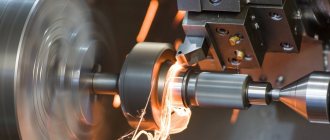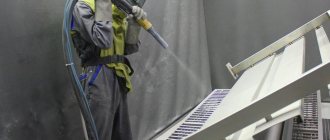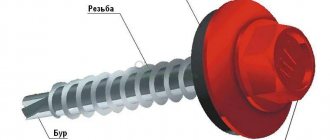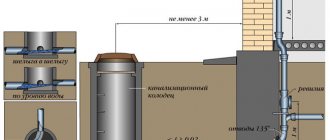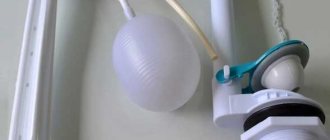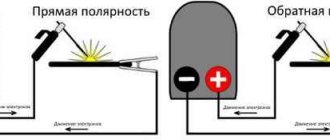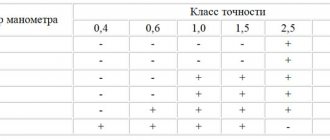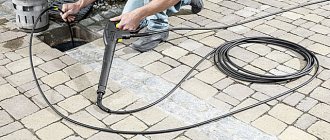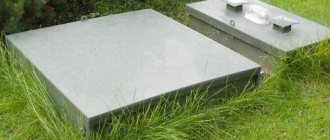An electric jigsaw is a device with which you can cut plywood of different thicknesses, as well as cut out various kinds of figures from it. Let's try to figure out how to properly cut plywood with a jigsaw, and let's start with the fact that the main thing here is strict adherence to safety precautions!
Therefore, before starting work, it is necessary to take care of such protective equipment as:
- glasses;
- gloves;
- special oil.
Basic rules for cutting plywood with a jigsaw
For smooth cutting, you must adhere to the recommendations below.
- At the very beginning, secure the plywood firmly.
- Start sawing across the grain. If you do this lengthwise, cutting will be much more difficult.
- Do not put pressure on the jigsaw. Otherwise, the device will heat up and may even fail.
- If the plywood has increased strength, then coat it tightly with oil. This will make the work much easier.
- Do not operate the jigsaw at low speed for too long, otherwise the engine may overheat. Upon completion of work, clean the tool and lubricate it.
Correcting existing chips
Any master should know not only how to cut with a jigsaw without chips, but also how to fix them if they do appear, because it is almost impossible to avoid them.
There is an exit. The tool is used to cut off the workpiece with an allowance of approximately 2 mm, then the allowance is ground off with a belt sander or milled . In the latter case, the edge turns out much cleaner than after processing with a grinding machine. They mill mainly on a self-made tire. Spiral cutters will improve quality; you need to prepare 2 of them. If it is necessary to obtain pure form on one front side, use an ordinary 2-start cutter, on both sides - a 4-start cutter with 2 main branches, which have a left direction, and 2 cutting ones, which have a right direction. In this case, when cutting a workpiece, the lower branches pull the material upward, while the upper branches press it down. As a result, chips do not form on the edges.
illumination of the work area to increase control over the direction of the cut . Sawing metal panels, wooden countertops in the kitchen and other products with a device with a well-sharpened saw blade.
Other process features
We continue the conversation about how to cut plywood using an electric jigsaw. If you plan to cut a round hole in the material, first make a small hole and place a hacksaw blade into it. You can also use plunge sawing if the previous method does not work.
Note! A jigsaw is also suitable for cutting bevels. Here you can additionally secure the guide so that you can cut smoothly. To avoid chipping, place the plywood face down.
Reasons for chipping
When sawing material from bottom to top, the teeth of the file catch and a break occurs. When wood blanks are sawed off, adjacent fibers become entangled. When sawing laminated chipboard , chips appear and the material is destroyed. If you cut 2 layers of a slab at once, the bottom one will be able to be sawed well due to the fact that the top one will not allow chips to appear. Processing accuracy can be increased using the “ Soft Start ” function. With this option, the electric jigsaw gains speed gradually. He moves quietly. The master needs to control the position of the cut point relative to the intended line.
The Soft Start function will help you make more accurate cuts.
Useful tips
When using an electric jigsaw to cut plywood, you will not need to use any additional equipment. However, they - devices - can still be used to make work easier and more comfortable.
If you are working with plywood of considerable thickness, then use a special sawing table (this way you can work more accurately). Finally, if you are working with material of different thicknesses, then use replaceable inserts that are attached to the tool.
How to choose?
In addition, the choice of cutting blade is, of course, important. Jigsaw blades are made from different materials with different shapes, sizes and sharpening. If materials with low density are processed, files with a length of 75, 85 or 100 millimeters are sufficient. The saw pitch varies from 2.5 to 4 millimeters in the case of wooden materials, and also from 1 to 2 millimeters when cutting metal. The abrasive coating on cutting blades is mainly diamond, which is indispensable for tiles, ceramics and glass.
Read also: Thyristor power regulator circuit for 12 volts
Non-ferrous metal can be cut with a wave-shaped file. When purchasing a cutting blade, you should definitely check whether it will fit your existing jigsaw. And also the choice is often made between professional and amateur jigsaws. The latter have less power, but are still suitable for typical household work.
It is believed that such a device is capable of making a cut up to 50 millimeters deep in wood, and from 2 to 3 millimeters in metal.
Marking files and reading them
The difficulty is that there is no unified labeling system in the world. However, many manufacturers try to adhere to the labeling system used by Bosch. And the main marking elements are the same on many products.
The purpose and compatibility of files is determined by color, as well as by digital and letter markings. Often the markings are applied to the shank of the file. There it is not erased during operation, and it will always be possible to determine what material it is intended for. But sometimes markings are placed throughout the canvas. Then, during work, the markings are erased, and the master will have to remember what kind of file it is. The colors mean the following:
- Gray – only for wood.
- Blue is for metal.
- White – for metal and wood.
- Red - for various plastics.
- Black - universal for many materials, specified by additional marking.
A saw for hard materials can be used to cut softer materials, but never vice versa. That is, a metal file can be used to cut wood, but not vice versa. But for effective cutting, you should select a file that is suitable for the material or a universal file.
Compatibility with the jigsaw in terms of the shank shape is important. The most common is the T-shank. As a rule, all such files have a standard shank size that fits all jigsaws. But sometimes there are models, especially old ones, that use saws with different shanks and their markings:
- U stands for U-Shaped Shank.
- M - straight shank with two holes, found on older Makita models.
- F – two crossbars and a straight end.
For the buyer, this marking letter has little meaning, since the shape of the shank is visible at the first glance at the file, even in a picture on the Internet.
The markings begin with these letters T, U and others. For example T101B.
The first number after the letter indicates the saw length group.
- 1 – the shortest files, up to 75 mm long.
- 2 – files of medium length, from 75 to 90 mm.
- 3 – files of increased length, from 90 to 150 mm.
- 4 are the longest, over 150 mm.
Special files with a length of more than 200 are marked with two numbers (the number) 10. In this case, there is a four-digit marking after the letter.
For sawing different materials, saws with different tooth shapes and sizes are used. tooth The last two digits indicate the shape and size of the tooth and its intended use for a particular material.
- 01 – teeth without set, ground to obtain a clean cut.
- 02 – for cutting various plastics.
- 08 – special tooth shape for the cleanest cut.
- 13 – wave-shaped file for soft materials.
- 11 and 19 – wood saws.
- 23 and 24 – files with different shapes and tooth pitches.
- 27 – files for copper, brass, aluminum.
- 41 – saws for sheet building materials – gas silicate (foam concrete), plasterboard, fiber.
- 44 – large tooth with a large set for fast rough sawing of wood.
These numbers are followed by a letter marking - one of the first four letters of the Latin alphabet - A, B, C, D. It indicates the size of the tooth in four main groups. A – the smallest tooth, further enlarged.
As an example, the marking of the T101B file is deciphered as follows:
- T – T-shaped shank.
- 1 – short file, up to 75 mm long.
- 01 – teeth without set, ground to obtain a clean cut.
- B is the second smallest tooth size.
This is the simplest marking. At the beginning it was said that the meaning of the marking may differ among different manufacturers. For example, if after the numbers there are symbols other than A, B, C, D, then the marking does not indicate the tooth size, but the pitch, that is, the distance between the centers of the teeth. Deciphered according to the following table:
- G is the smallest step, up to 1 mm.
- E - pitch from 1.4 mm to 1.5 mm.
- A - step from 1.5mm to 2mm.
- B from 2 mm to 3 mm.
- BC - marking of different (variable) steps, alternating larger and smaller steps.
- C - from 3mm to 4mm.
- D - from 4 to 5 mm.
- X - files with different tooth pitches, increasing towards the end of the blade
- RIFF is a blade with a special fine-grained coating for cutting ceramic tiles.
In addition, the purpose of the file can be simply indicated by an English word. Specifically:
- Wood - used for regular wood.
- Hardwood - for hard wood.
- Alu - the first letters of the name of the metal - aluminum.
- Metal - for ferrous and other metals.
- Inox - specifically for stainless steel.
- Acrylic - for cutting polycarbonate and acrylate materials.
- Fiber&Plaster - for cutting plastics and fiberglass.
- SoftMaterial - for soft sheet materials (linoleum, artificial leather and leather, polystyrene foam, polystyrene foam, etc.)
Sometimes the inscription is in Russian instead of English. For example, just “wood/plastic”.
The grade of steel from which the file is made is important. If the length, shape of the shank, dimensions and pitch of the teeth can be seen and assessed without markings, simply by examining the file, then the grade of steel can be determined solely by markings.
- HCS is a steel with a high carbon content, suitable for cutting soft materials.
- BiM—bimetal (two metals). The use of two different metals increases the strength of the canvas. Bimetal blade can be used for different materials.
- CV is an alloy of chromium and vanadium.
- HSS (high-speed cutter) is the most common tool cutting steel. Used for cutting metal.
- Carbide Technology (CT) or NM - files with a super-hard coating of tungsten carbide, cobalt or artificial diamond powder. They can cut ceramic tiles, finishing bricks, various plastics, asbestos-cement sheets, slate and many other materials.
The metal mark is applied separately from the rest of the markings. Most often, also on the shank, located perpendicular to the rest of the markings.
Files from Rebir and their compliance with expensive analogues from Bosch.
